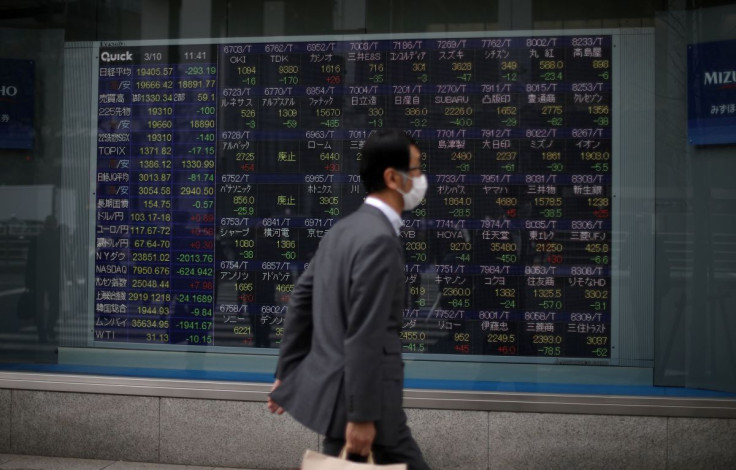Asia Stocks Hit 16-month Low On Ukraine Nuclear Plant Fire

Asian equities and the euro weakened on Friday while oil prices jumped as investors took fright from reports of a nuclear power plant on fire amid fierce fighting between Ukraine and Russian troops.
The risk-off appetite battered markets across the region, sending Wall Street futures also lower, suggesting more pain for European and U.S. markets when they open later in the day.
RIA News agency cited the Ukrainian atomic energy ministry as saying that a generating unit at the Zaporizhzhia nuclear power plant, the largest of its kind in Europe, had been hit during an attack by Russian troops.
While prices have since trimmed losses from their morning lows on reports there was no immediate change in radiation levels in the area, investors remain extremely anxious.
"Markets are worried about nuclear fallout. The risk is that there is a miscalculation or overreaction and the war prolongs," said Vasu Menon, executive director of investment strategy at OCBC Bank.
MSCI's broadest index of Asia-Pacific shares ex-Japan tumbled as much as 1.6% to 585.5, the lowest level since November 2020, taking the year-to-date losses to 7%. It regained some losses but was still down 1.4%.
"Markets don't want a contagion effect and more European countries impacted by the crisis," said Menon. "If investors are looking to buy, they need to have a strong and long-term risk appetite."
Stock markets across Asia were in a sea of red, with Japan losing 2.6%, South Korea 1.3%, China 0.7% and Hong Kong 2.7% while commodities-heavy Australia was down 0.7%. S&P 500 futures shed 0.9% and Nasdaq futures fell 1%. Overnight, Wall Street ended lower as investors remained on edge over the Ukraine crisis, while rising prices of commodities also weighed on market sentiment.
Investors sought refuge in safe-haven U.S. Treasuries, sending yields on benchmark 10-year yields as much as 14 basis points lower to 1.7%. They later inched back up to 1.78%. Oil prices jumped on Friday after ending steady a day earlier, with the market also focused on whether the OPEC+ producers, including Saudi Arabia and Russia, would increase output from January.
Brent crude futures for May rose to as much as $114.23 a barrel and were last up 1.5% at $112.2. The contract fell 2.2% on Thursday.
There was no let-up in other commodities also, with Chicago wheat futures jumping nearly 7%, taking the weekly gain to more than 40% on supply side worries.
On the economic data front, the U.S. employment report on Friday is expected to show another month of strong job growth, with the Omicron COVID-19 variant wave of infections significantly diminished.
"We are still talking about very strong global growth, we are still rebounding, reopening from the pandemic, we still have confidence in the consumer outlook," said David Goodman, lead economist at Aware Super, one of Australia's largest superannuation funds, which manages more than $150 billion.
Goodman said the market volatility underscored the need to have a diversified portfolio with exposure to different markets, adding that the fund's portfolio included firms in renewables energy, digital infrastructure, housing and logistics sectors.
Gold prices also rose on Friday, eyeing their best weekly gain since May 2021. Spot gold edged up 0.2% to $1,939,5.
In currency markets, the euro lost further ground and was set for its worst week versus the dollar in nine months. It fell 0.3% to $1.10320 and traded above the day's lows. It has lost about 1.8% this week, which would be the euro's worst week since June 2021.
Federal Reserve Chair Jerome Powell on Thursday repeated his comments from Wednesday that he would back an initial quarter percentage point increase in the bank's benchmark rate.
© Copyright Thomson Reuters 2024. All rights reserved.




















